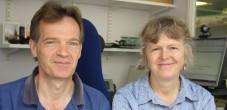
Submitted by Administrator on Mon, 28/11/2016 - 15:48
In the earliest moments of a mammal’s life, the developing ball of cells formed shortly after fertilisation ‘does as mother says’ – it follows a course that has been pre-programmed in the egg by the mother. Extraordinary as this is, what happens then is even more remarkable.
Just before implantation in the uterus, the ball of cells, called a blastocyst, gains the capacity to generate all of the cell types of the subsequent adult – a feature called pluripotency. It is at this moment when everything is possible, when the history of the previous generation has been wiped clean and when the embryo begins its unique course of development.
But, although these ‘naive’ stem cells have been isolated in mice – and mouse cells at a later stage of development can be manipulated to take them back to full naivety – the same has not been convincingly accomplished for humans.
Now researchers led by the Wellcome Trust-Medical Research Council Cambridge Stem Cell Institute have managed to induce a ground state by rewiring the genetic circuitry in human embryonic stem (ES) cells and in adult cells that have been induced into a pluripotent state. Their ‘reset cells’ share many of the characteristics of authentic naive ES cells isolated from mice, suggesting that they represent the earliest stage of development.
Read more: Cambridge Research

